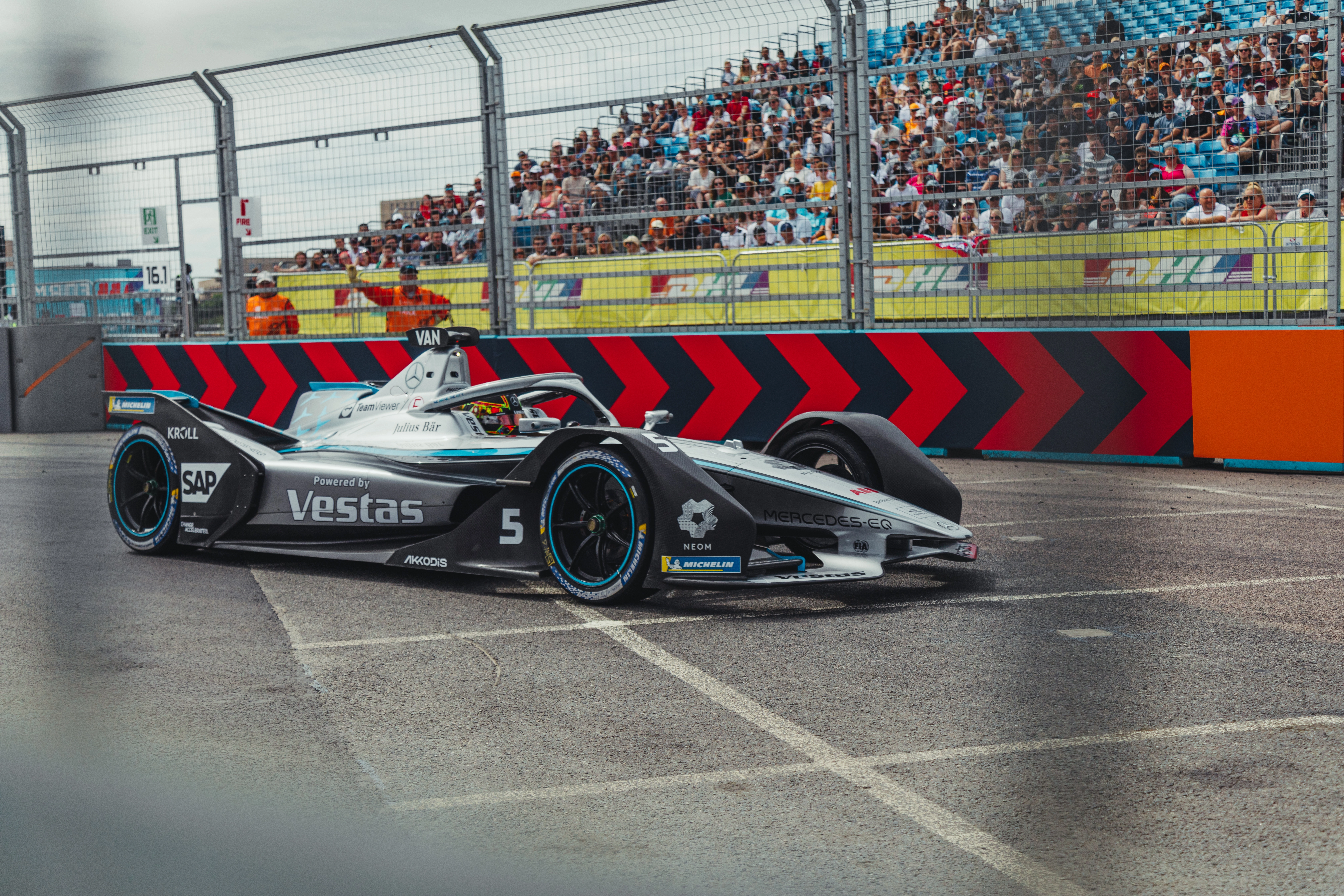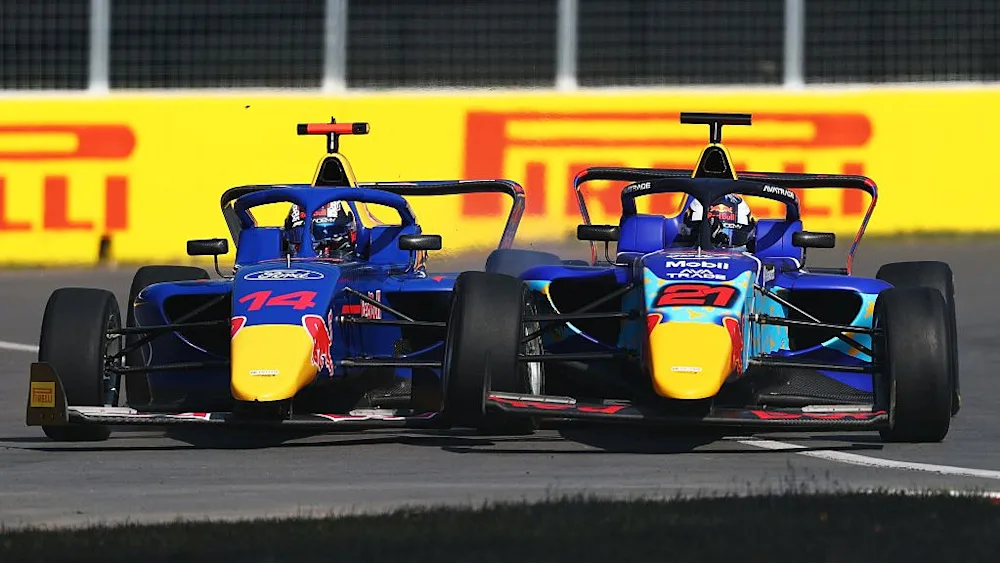Cadillac’s all-star second drivers: will it work?
- Peter Johnson

- Aug 29
- 5 min read
Updated: Sep 1
Written by Peter Johnson, Edited by Meghana Sree

It is fair to say that Cadillac could not have wished for a better driver line-up as the team makes its Formula One bow in 2026. In Sergio Pérez and Valtteri Bottas, Team Principal Graeme Lowdon could not realistically have signed drivers of greater quality or experience.
With Pérez and Bottas sharing 16 wins, 106 podiums, more than 500 starts and a combined age of 71 years old, making them as it stands the oldest line-up on the grid, the new boys from the States have left no stone unturned in their quest for success.
But how will the two most iconic second drivers of a generation fare against, or indeed in partnership, with one another?
First of all, both Pérez and Bottas return to the sport with a point to prove. Bottas’ rather anonymous final season with Sauber marked an underwhelming departure from the sport, while his constant presence in the Mercedes garage this season has been a reminder of his intention to return to the grid.
Pérez, meanwhile, was acrimoniously dumped by Red Bull at the end of 2024, finishing a distant eighth in the championship while his teammate Max Verstappen romped to a fourth title.
However, hindsight has proven to be a wonderful thing for Pérez, with the desperate performances of Liam Lawson and Yuki Tsunoda this season leaving Red Bull surely regretting their decision.
Historic data is also incredibly revealing in the case of both – if you remove their seasons as teammates to Lewis Hamilton and Verstappen respectively, Bottas and Pérez have consistently out-performed teammates throughout their careers.
Sergio Pérez H2H vs Teammates
2011 Sauber Pérez 14 - 30 Kobayashi
2012 Sauber Pérez 66 - 60 Kobayashi
2013 McLaren Pérez 49 - 73 Button
2014 Force India Pérez 59 - 96 Hülkenberg
2015 Force India Pérez 78 - 58 Hülkenberg
2016 Force India Pérez 101 - 72 Hülkenberg
2017 Force India Pérez 100 - 87 Ocon
2018 Racing Point* Pérez 62 - 49 Ocon
2019 Racing Point Pérez 52 - 21 Stroll
2020 Racing Point** Pérez 125 - 69 Stroll/Hülkenberg
2021 Red Bull Pérez 190 - 395.5 Verstappen
2022 Red Bull Pérez 305 - 454 Verstappen
2023 Red Bull Pérez 285 - 575 Verstappen
2024 Red Bull Pérez 152 - 437 Verstappen
*Changed name mid-season from Force India
** Pérez missed the British and 70th Anniversary Grands Prix due to Covid. Teammate’s points in these races are not included.
If you exclude Pérez’s four seasons spent as the second driver to Max Verstappen at Red Bull, he outperformed his teammate in 7 out of 10 seasons.
In fact, he won the teammate battle in six consecutive seasons against Nico Hülkenberg, Esteban Ocon and Lance Stroll, a record which eventually earned him the Red Bull drive.
Valtteri Bottas H2H vs Teammates
2013 Williams Bottas 4 - 1 Maldonado
2014 Williams Bottas 186 - 134 Massa
2015 Williams Bottas 136 - 121 Massa
2016 Williams Bottas 85 - 53 Massa
2017 Mercedes Bottas 305 - 363 Hamilton
2018 Mercedes Bottas 247 - 408 Hamilton
2019 Mercedes Bottas 326 - 413 Hamilton
2020 Mercedes Bottas 223 - 350 Hamilton/Russell
2021 Mercedes Bottas 226 - 387.5 Hamilton
2022 Alfa Romeo Bottas 49 - 6 Zhou
2023 Alfa Romeo Bottas 10 - 6 Zhou
2024 Sauber Bottas 0 - 4 Zhou
If you exclude Bottas’ five seasons spent as understudy to Hamilton, he beat his teammate on six out of seven occasions. This included a three-year stint alongside 2008 World Championship runner-up Felipe Massa, who he soundly beat every season.
The only occasion he failed to outperform a non-Hamilton teammate was in the 2024 season, when Zhou Guanyu scored Sauber’s only points of the season in the year’s penultimate Grand Prix in Qatar.
The obvious conclusion we can draw from both of these charts is that, when not partnered against an all-time great, both Pérez and Bottas have out-performed top-quality teammates on a regular basis.
Both drivers also managed to do so in teams without a culture of a clear number one and number two driver.
It cannot be said that either benefited from particularly favourable treatment over their respective colleagues – they were simply quicker, and regularly so.

Will either be Number One?
It is highly unlikely Cadillac will designate either driver number one status, and there are several reasons for this.
Firstly, the very notion of a “number one” or “number two” driver is almost entirely reserved for teams fighting for championships. With Cadillac likely to be satisfied with the occasional flirtation with points, especially in the outfit’s first half-season or so, it seems such an approach will simply not be necessary.
Second, the team is in an extremely privileged position given the quality of its drivers, and with both out to shake their reputation as obedient, trampled-upon teammates, neither is likely to accept being forced to play second fiddle again. It would be crazy to upset either one of the pair at such an early stage when the team is unlikely to be challenging right at the front.
Third, and related to the above point, as a brand new team, Cadillac needs everybody pulling in the same direction. The team simply cannot afford to pit both sides of the garage against each other as it looks to find its footing in the sport.
Finally, and possibly the most fundamental point of the four, how on earth would the team decide who to prioritise out of Bottas and Pérez? Both are phenomenal drivers and over the course of a season will surely be fairly even matched.
Even if one shades the other - and it is anyone’s guess as to who that will be - it is hard to believe it will be by such an amount that makes it worthwhile to favour one strongly over the other.

The Haas approach?
Cadillac’s situation in 2026 is not dissimilar to that of Haas in recent years, that of a team trying to establish itself in the midfield fight.
Haas switched within a couple of seasons from having a couple of rookie pay drivers - Mick Schumacher and Nikita Mazepin in 2021 - who ran up huge costs in damage and led the team to last place in the Constructors’ Championship - to having two of the most experienced drivers on the grid in Hülkenberg and Kevin Magnussen from 2023.
Also two former rivals turned teammates - see their spat at the 2017 Hungarian Grand Prix - Hülkenberg and Magnussen worked extremely effectively as a pair in the best interests of the team.
This approach was epitomised by Magnussen’s strategy in the 2024 Miami sprint race, when he incurred four separate time penalties and three penalty points as he fought to keep Hamiton’s Mercedes at bay. Hülkenberg would go on to collect two points for a seventh-placed finish in that race.
In conclusion, Cadillac has an unbelievably strong driver pairing which stands the team in good stead for the baptism of fire that will come its way next year.
In reality, it matters little who scores more points, as long as they function well as a team.
Given the experience and maturity of both, it is difficult to envisage a rocky relationship, even if Pérez does have a history of not getting on with certain teammates - think Ocon.
However, the F1 world has been crying out to see these two in equal cars ever since 2021, when debate raged as to who of Hamilton and Verstappen had a stronger teammate.
It is a tantalising prospect, and for the good of the sport it is vital to see both given an equal opportunity as they seek to lay demons to rest and help to build and lead a new team, rather than serve as pawns in a championship struggle.











Comments